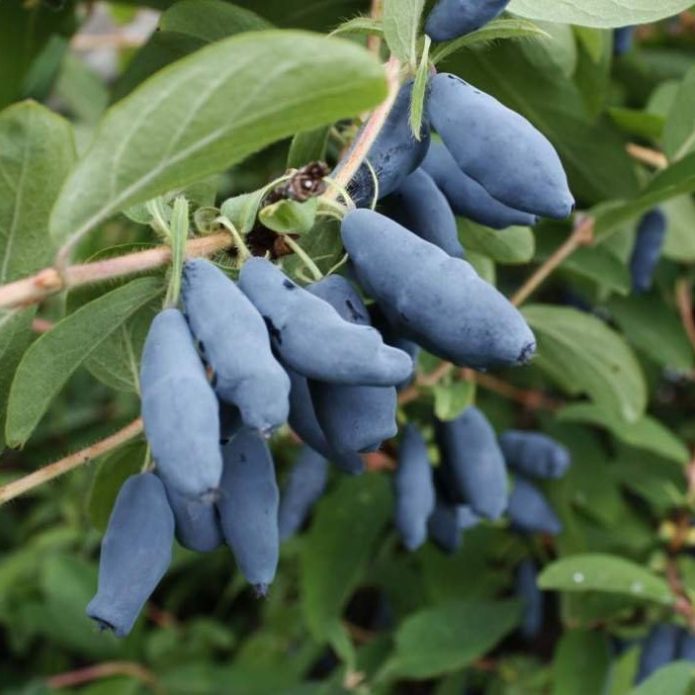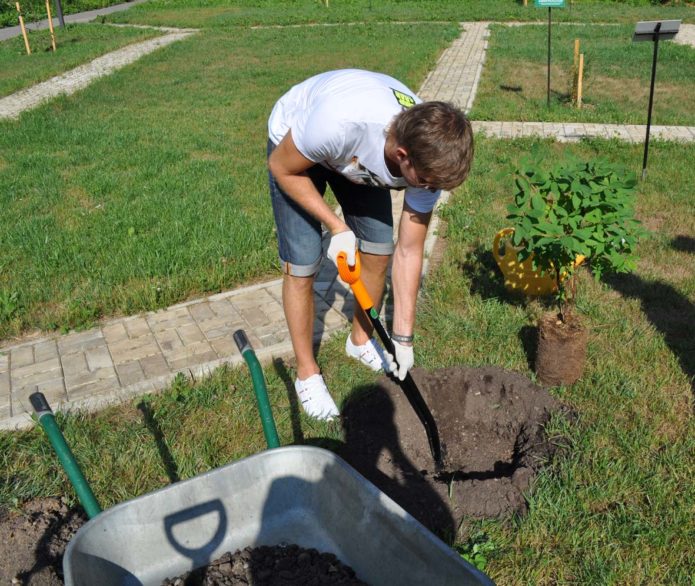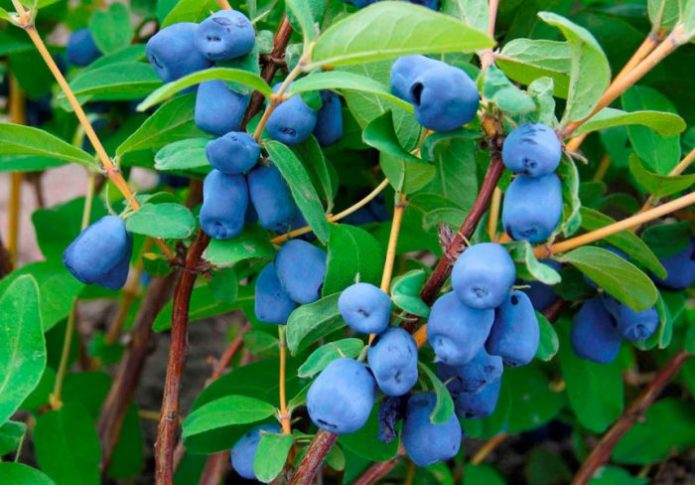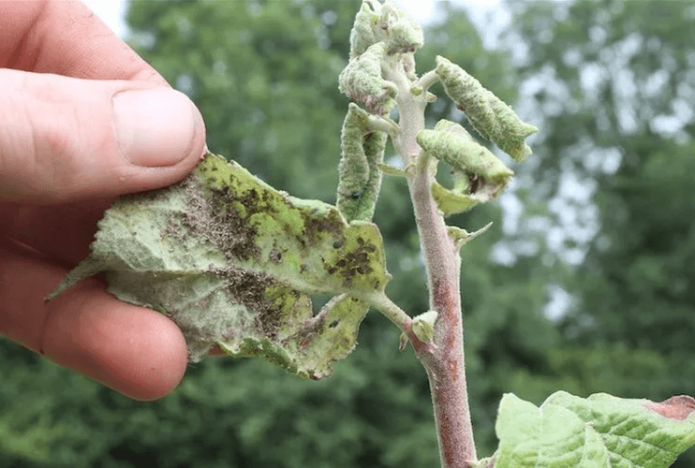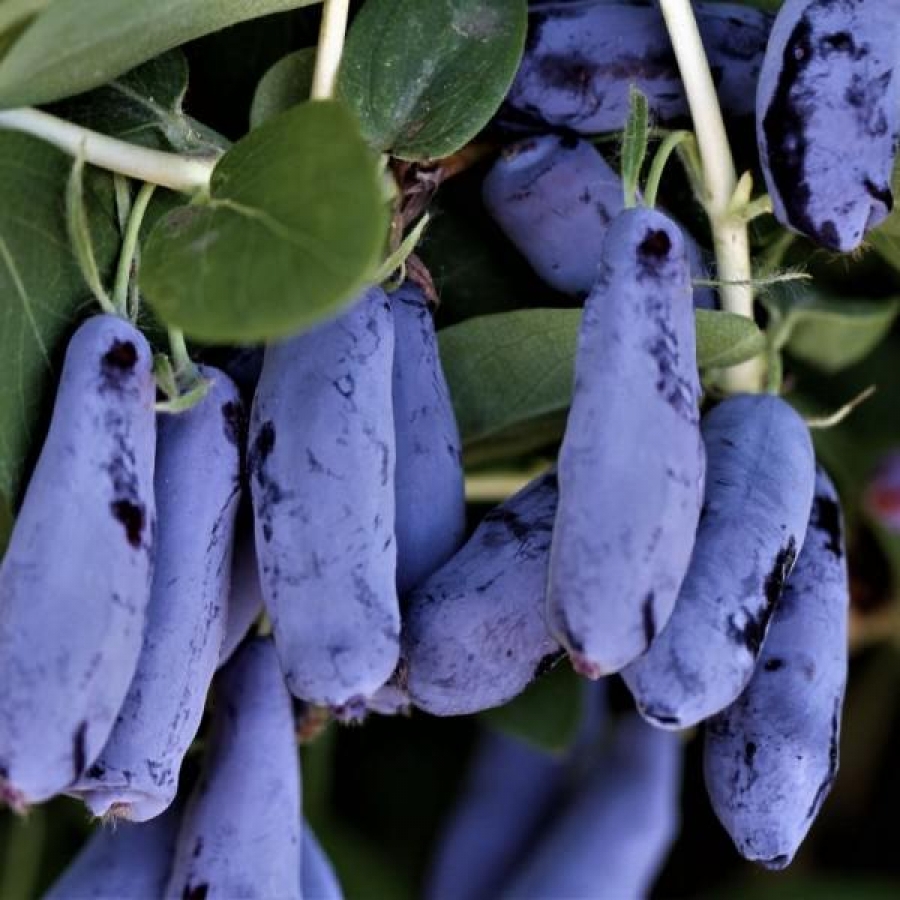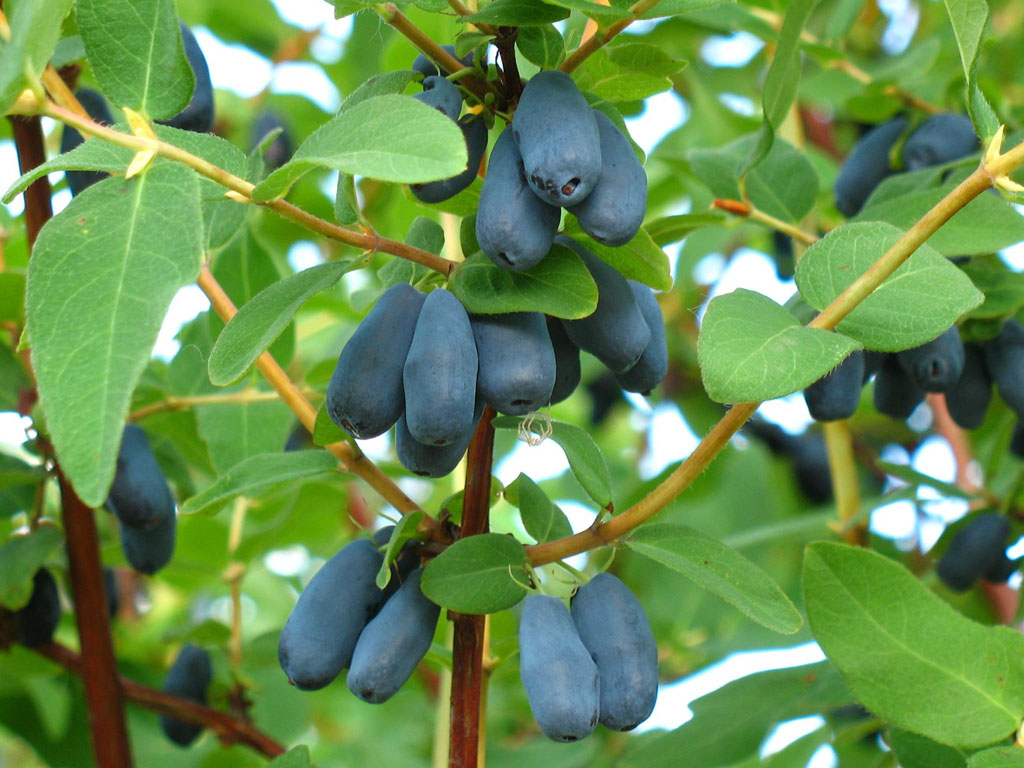Honeysuckle is the very first berry that ripens in our gardens. Its main purpose is to eliminate the vitamin deficiency that has formed during the winter. The Swan variety is ideal for this, because its berries are distinguished by a high content of ascorbic acid.
Content
The history of the appearance of the honeysuckle Swan
The swan belongs to the most unpretentious and frost-resistant species - Kamchatka honeysuckle. The variety is originally from St. Petersburg. Breeders of the All-Russian Institute of Plant Industry named after V.I. N.I. Vavilov by crossing the Pavlovsky variety with a prototype number 21-1. From the seedlings that appeared, they selected those that best met the requirements of scientists. The Swan was included in the State Register of Breeding Achievements of the Russian Federation in 1999, and it is allowed to grow in all regions of the Russian Federation.
Description of the variety
Swan's bush is thin, vigorous, 1.5 m high, rarely grows up to 2 m. Branches are erect, thick. The bark on young shoots has a green tint, turns brown over the years, can flake off. Leaves are dense, slightly convex, elliptical.
The swan begins bearing fruit at the age of 3-4 years. In terms of ripening, it is mid-season: berries can be picked a week later than the early varieties (Berel, Sorceress, Cinderella). The mass collection in most regions falls on the middle and even the end of June.
The fruits of this variety grow up to 1.5–2 cm in length, sometimes up to 2.7 cm, weighing an average of 1.2 g. The shape of the berries is barrel-shaped, with an elongated base. The skin is bluish-blue, thick, bumpy, covered with a waxy coating. Due to these properties, Swan fruits are well transported and stored. Productivity - 2.5 kg per bush or 40 kg / ha, which is not so little for this crop.
A very attractive feature of the variety - the berries do not crumble, they hang on the branches for a long time, even when ripe. Rarely does honeysuckle have this quality. More often the berries have to be picked from the ground than from the bush. The swan will keep the fruits on the branches both under the downpour and in a strong wind.
Like all Kamchatka honeysuckles, Swan is highly winter-hardy, easily tolerates the most severe winters, and its flowers can withstand return frosts down to –8 ° C. There are disadvantages:
- young shoots and leaves are affected by aphids;
- pollinators are needed, the best are the Blue Spindle, Blue Bird, Start, Morena, Malvina.
Of course, the most important thing in a berry is its nutritional value and taste. Swan fruits are sweet, refreshing, without bitterness. 100 g of the product contains:
- 8.4 g sugar;
- 2 g acids;
- 63.6 mg vitamin C.
The purpose of the first berry in the garden is to be consumed fresh. But if there is a lot of honeysuckle, then the Swan can be sent for processing: for jams, compotes, wine and liqueurs. Berries of this variety are great for drying and freezing.
Table: comparison of Swan with other varieties
| Variety name | Productivity (kg / ha) | Berry weight (g) | Taste on a 5-point scale | Ripening period | Crumbling | Transportability | Resistant to aphids |
| Swan | 40 | 1,2 | 4,8 | Middle | Weak | High | Absent |
| Malvina | 48,9 | 1,09 | 4,4 | Early and mid-early | Average | Average | Average |
| Moraine | 53,3 | 1,0 | 4,5 | Early and mid-early | Does not crumble | High | High |
| Enchantress | 40,6 | 1,0 | 4,6 | Early | Weak | High | Average |
| Berel | 76 | 0,45 | 4,5 | Early | Does not crumble | Very high | Very high |
| Cinderella | 21 | 1–1,4 | 4,5 | Early | Strong | High | Weak |
Video: overview of honeysuckle varieties
So, the advantages of Swan are the relatively large size of the berries, their resistance to shedding, good taste and high transportability. The main drawback is that it is not able to withstand aphid attacks.
Planting honeysuckle
The planting site greatly affects the taste and size of future berries. Many people mistakenly choose shady areas under a fence or between trees for honeysuckle, and then complain that there are few berries, they are small and sour. The bush should be well lit by the sun, and protection from the wind will not hurt. Plant near a fence or building, but on the south side.
In addition, damp areas are not suitable for this culture, where the land does not dry out for a long time or at all after melting snow and rains. In such conditions, the bush will grow poorly and may die. The soil should be loose, fertile, with a slightly acidic reaction - pH 6–6.5.
You will have to plant not one bush, but at least two, the second should be a pollinator variety.
Landing order:
- Make holes at a distance of 1.5–2 m from each other, retreat the same amount from buildings, a fence, paths, strawberry and vegetable beds.
- When planting on one plant, add:
- humus or compost, can be mixed with soil 1: 1 or covered with roots only with it;
- 50-60 g of superphosphate;
- 40-50 g of potassium salt (no nitrogen and chlorine).
- Mix mineral fertilizers with the soil at the bottom of the hole. The roots should not come into contact with the chemical granules.
- Place the seedling in the hole without deepening the root collar (the place where roots begin to grow).
- Water and mulch after planting.
Swan Care
Water the honeysuckle once a week, using 3-5 liters for a young bush and 10 liters for an adult. Feed twice a season:
- in spring - with urea (20-30 g / m²), can be poured with infusion of organic matter (dung, nettle, mullein);
- in autumn - wood ash (100-200 g / m²): scatter under the bush and mix with the ground.
The pruning of the bush deserves special attention. Conduct it in the following sequence:
- At the time of planting, slightly shorten the shoots of the seedlings (by 2-3 cm) so that they begin to branch. Do not prune the honeysuckle before it starts bearing fruit, since berries are formed on annual growths. It is the length of these increments that will be the main criterion for all pruning: the larger it is, the more productive the branch.
- When the Swan bush grows well, thin it out, leaving straight shoots growing to the side.
- Remove curves and those lying on the ground or shorten them to the first vertical branch.
Cut dry branches annually, as well as those with short annual growths (10-15 cm). Do pruning in the fall, after leaf fall, then it will be easier to understand the interweaving of the branches.
You can also prune honeysuckle in spring. Do this as early as possible, before bud break.
Video: pruning honeysuckle in spring
For the first 5–6 years, honeysuckle will grow very slowly. Old branches for rejuvenation of the bush are removed only at the age of 15–20 years.
Another important event at the end of the season is the mulching of the trunk circle. The swan is frost-resistant, but the roots of any honeysuckle are located at the very surface of the earth. If you cover the soil under a bush with dry grass, humus or sprinkle it with ordinary earth, then it will winter better and will thank you with a higher yield.
Aphid protection
Aphids on honeysuckle are dangerous because they settle on the most important organs of this culture - young growths, suck out juices, limit their development, which significantly reduces the yield of the next year. Severely affected shoots not only grow poorly, but also completely dry out.The fight against aphids on Swan requires special diligence and is carried out in several stages.
The first treatment should be started in early spring before bud break, since honeysuckle blooms early and it is impossible to spray with chemicals from the beginning of budding until the end of fruiting. And when aphids are still in the larval stage and sleep on the surfaces of branches, there is a chance to destroy foci of infection.
Honeysuckle processing options from aphids to bud break:
- pour boiling water over the bushes, as is done with currants and gooseberries;
- treat with a contact action pesticide: Nitrafen or Preparation 30 plus.
When working with contact preparations, it is important to moisten every millimeter of the twigs, since they only work when they directly come into contact with aphids.
After budding (from the moment the green cone appears), switch to systemic insecticides, which are absorbed by the leaves and spread throughout the plant:
- Aktara,
- Spark,
- Biotlin,
- Tanrek.
Knowing about the instability of the Swan to aphids, do not wait for the pests to come and populate all the shoots, treat in advance for prevention. Then you will not leave any chance for insects, the very first individuals will die, only having begun to feed, they will not have time to reproduce.
The period of protective action of the preparations is not so long compared to the periods of flowering and fruiting. Aphids will have time to settle on your Swan during this period. Therefore, treatment with systemic insecticides will have to be carried out after harvest. Be sure to repeat spraying at least 2-3 times, since the life cycle of aphids is very short. It takes only 1–2 weeks from the hatching of the larva from the egg to the onset of sexual maturity.
Reviews of gardeners about the Swan variety
I forgot about my honeysuckle Swan. Today I ran to look. And there is a harvest - 50 berries. Last year they ate 3 pieces, but this is just a harvest! Doesn't taste bitter, as for me. All on the bush, today's downpour did not knock down. The bush is 40 centimeters. There is a lot of growth this year.
The swan is small in stature, but there are more berries than leaves.
The Swan variety was created for the amateur garden and personal consumption. Due to its low yield, it does not arouse commercial interest, although it produces tasty, large berries that are well transported. Classic care is complicated by the fight against aphids. If this is a problem for you, then it is better to choose pest-resistant honeysuckle. And if the removal of pests does not cause great difficulties, the Swan will grow well, bear fruit and delight with early vitamins.
